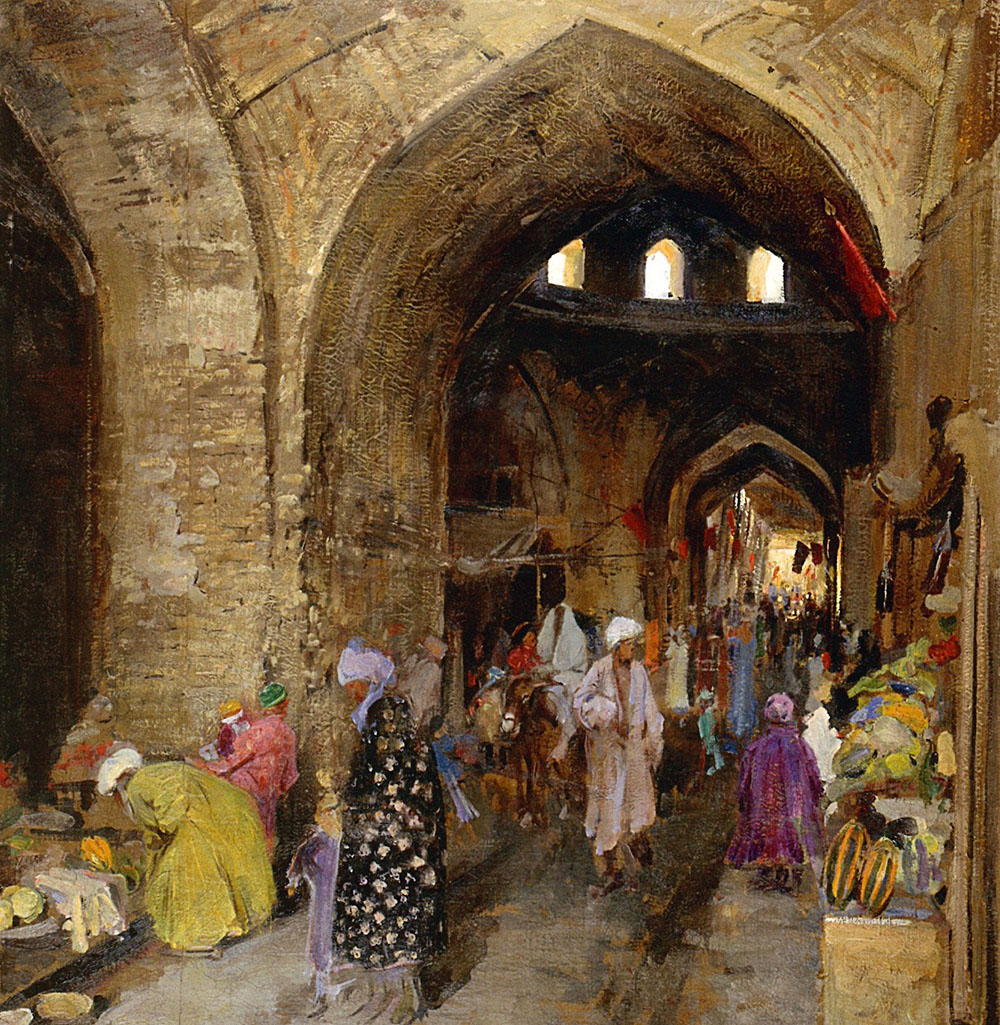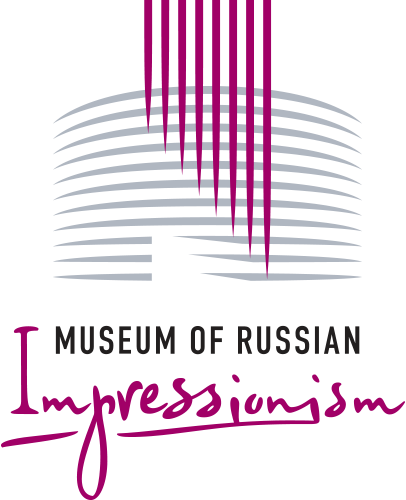
Covered Bazaar in Bukhara, 1920-е - 1930-е
Pavel Benkov
Oil on canvas
135X128
The State Museum of Oriental Art
In Kazan, Benkov’s skill in subtly sensing the emotional power of colour increased. However by the end of the 1920s, the atmosphere of his native city ceased to inspire the painter. He was in search of stories and scenes that would allow him to reveal his gift as a colourist. As a theatre artist, Benkov was interested in oriental costume and decorative art. Perhaps it was this that prompted him to go to Central Asia — to Uzbekistan — a place filled with sunshine, filled with bright and motley Eastern daily life, romantic, and liberated by the revolution. Out of all the cities of Uzbekistan, Benkov chose one of the most colourful — Bukhara — for his first acquaintance.
Benkov’s Bukhara period would turn out to be particularly fruitful. He did not alter his favourite painting tricks, but it is here that his gift to see colour was revealed — with special fullness and power.
In Bukhara, Benkov was interested in the lively covered bazaars. They were built at the intersections of trade roads and overlapped with domes that protected merchants and buyers from the merciless rays of the sun. In the painting “Covered Bazaar in Bukhara”, the artist skillfully conveys the transparent twilight under the dome, the massiveness of the ancient 16th century architecture and the richness of the Uzbek clothes. The effects of sun rays penetrating under the domes from different sides especially fascinated Benkov. Like most of his canvases, the artist began to paint this work in the open air, and then completed the work in the studio, using models and props.



